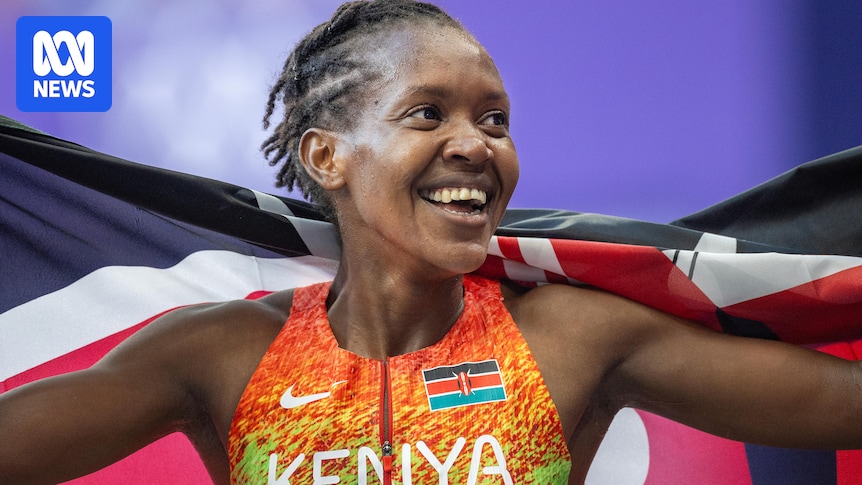
Faith Kipyegon, the remarkable Kenyan runner and three-time Olympic champion over 1,500 meters, is set to challenge the boundaries of human athletic achievement in Paris this week. At 31, Kipyegon aims to become the first woman to break the 4-minute mile, a feat that has remained exclusive to male athletes since British icon Roger Bannister first achieved it in 1954.
The attempt will take place at the Stade Charléty on June 26, 2025, and it promises to be a landmark event in the world of athletics. Kipyegon, who holds the current women’s mile record at 4:07.64, is looking to shave off over seven seconds from her personal best, a daunting task that has drawn comparisons to Eliud Kipchoge’s historic sub-two-hour marathon run.
The Historical Significance of the 4-Minute Mile
The 4-minute mile has long been considered the “holy grail” of middle-distance running. Since Bannister’s groundbreaking run, over 1,700 male athletes have achieved this milestone, yet no woman has come close. Diane Leather was the first woman to run a mile under 5 minutes in 1954, and the current women’s mile record, set by Kipyegon herself, stands at 4:07.64.
Breaking this barrier would not only redefine the limits of women’s athletics but also inspire a new generation of female runners. Kipyegon’s attempt is supported by Nike, which has a history of pushing the boundaries of athletic performance through technological innovation.
Technological Innovations: The Key to Success?
Nike’s involvement in Kipyegon’s attempt is reminiscent of its support for Kipchoge’s sub-two-hour marathon. The company has developed a special skin suit for Kipyegon, featuring 3D-printed “aeronodes” designed to reduce drag. Additionally, she will wear a custom, body-mapped 3D-printed bra and a drag-reducing headband.
Perhaps most crucially, Kipyegon will be equipped with custom spikes weighing just 85 grams, featuring a carbon plate and titanium pins for enhanced energy return. These technological advancements are part of a broader trend in athletics, where equipment innovation plays a significant role in breaking records.
“I’m a three-time Olympic champion. I’ve achieved World Championship titles. I thought, What else? Why not dream outside the box?” – Faith Kipyegon
Comparisons and Expert Opinions
The challenge Kipyegon faces is monumental. To break the 4-minute barrier, she must improve her time by over 3 percent. For context, Usain Bolt’s legendary 100m world record in 2009 improved the previous mark by just 1.13 percent. Similarly, Kipchoge’s sub-two-hour marathon required a 1.63 percent improvement over his previous record.
Experts are divided on the feasibility of Kipyegon’s goal. Dr. Michael Deakin from Monash University suggested in 2009 that a mile could theoretically be run in 3 minutes, 25 seconds. More recent studies, such as one published in the Royal Society Open Science journal, indicate that with optimal pacing, Kipyegon could achieve a time of 3:59.37.
The Implications of Breaking the Barrier
Should Kipyegon succeed, it would not only cement her legacy as one of the greatest distance runners of all time but also challenge the existing norms in women’s athletics. The current world record progression in the mile has seen significant leaps, with Kipyegon herself improving the previous record by 4.69 seconds in 2023.
Kipyegon sees this attempt as an opportunity to inspire her seven-year-old daughter and future generations of female athletes. “I want this attempt to say to women, ‘You can dream and make your dreams valid,'” she told Nike.
“The next generation is looking up to us to show them the way and this is what I’m doing now. … Everything we do, we have to dream big and just believe in ourselves that we could do it.” – Faith Kipyegon
Looking Ahead: The Future of Women’s Athletics
As Kipyegon prepares for her historic attempt, the world of athletics watches with bated breath. Her success could redefine the possibilities for female athletes and encourage a reevaluation of what women can achieve in sports. Whether or not she breaks the 4-minute barrier, Kipyegon’s attempt is already a testament to the power of dreaming big and pushing boundaries.
In the end, Kipyegon’s challenge is not just a personal quest but a collective step forward for women in sports. As she stands on the starting line in Paris, she carries with her the hopes of many, and regardless of the outcome, her legacy as a trailblazer is already secure.





